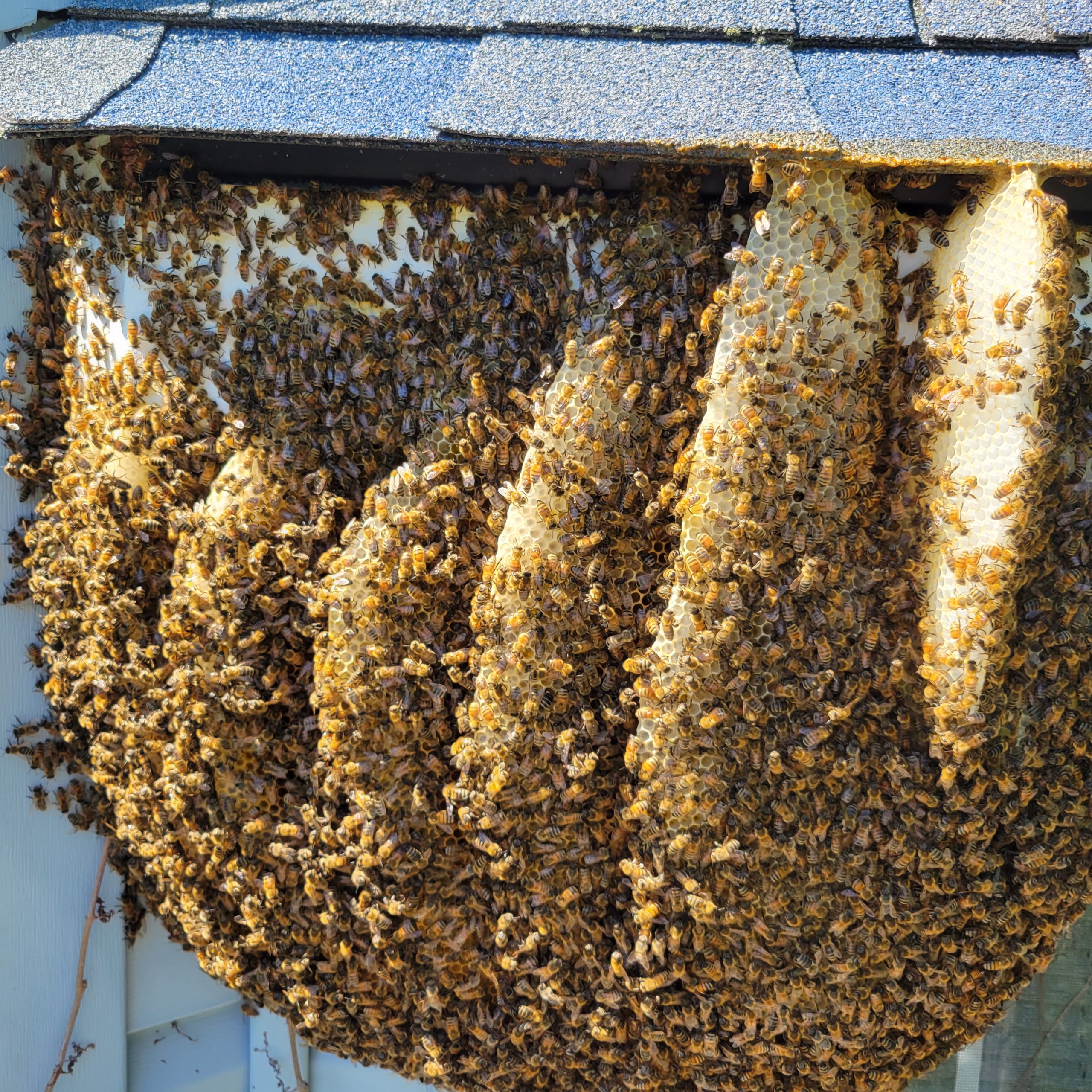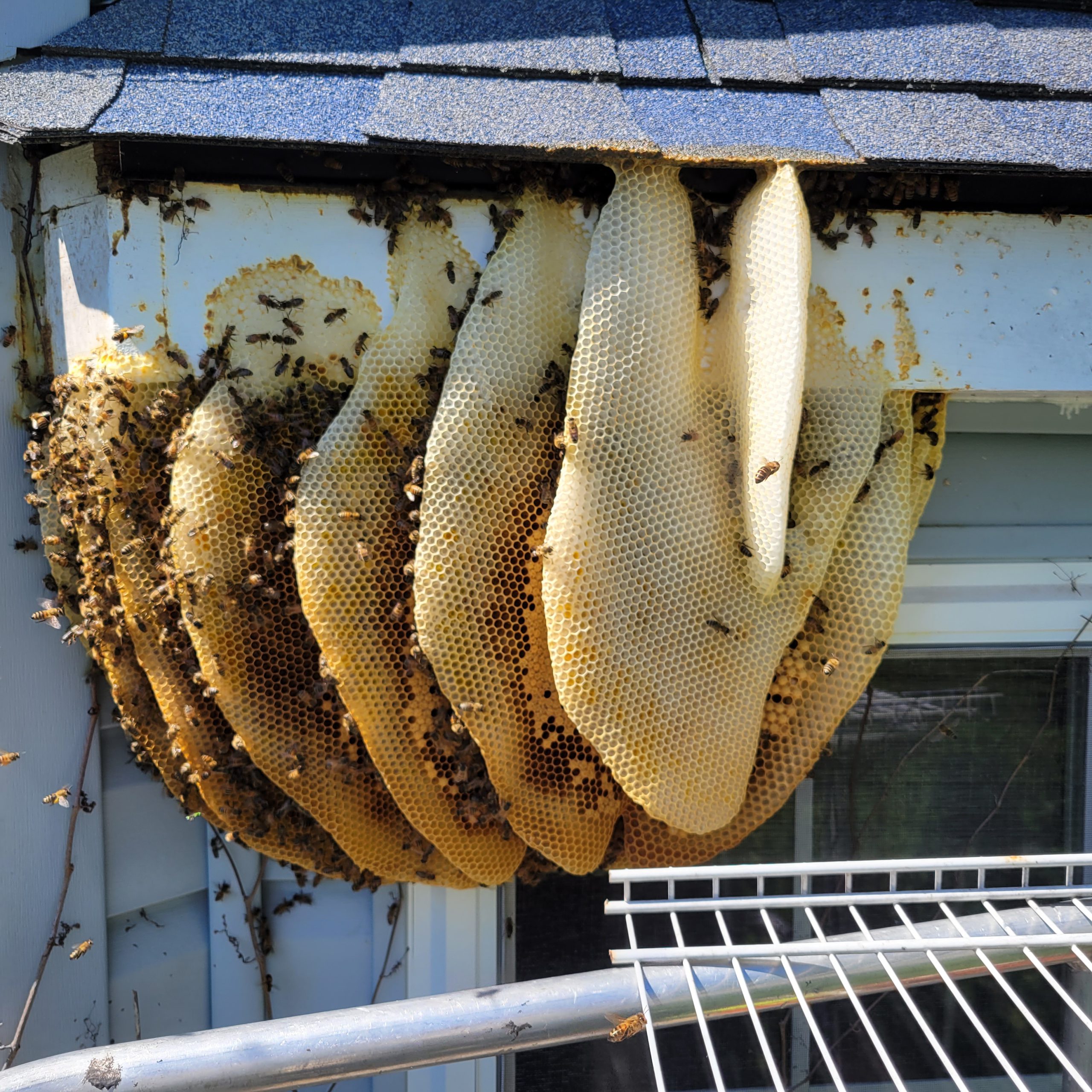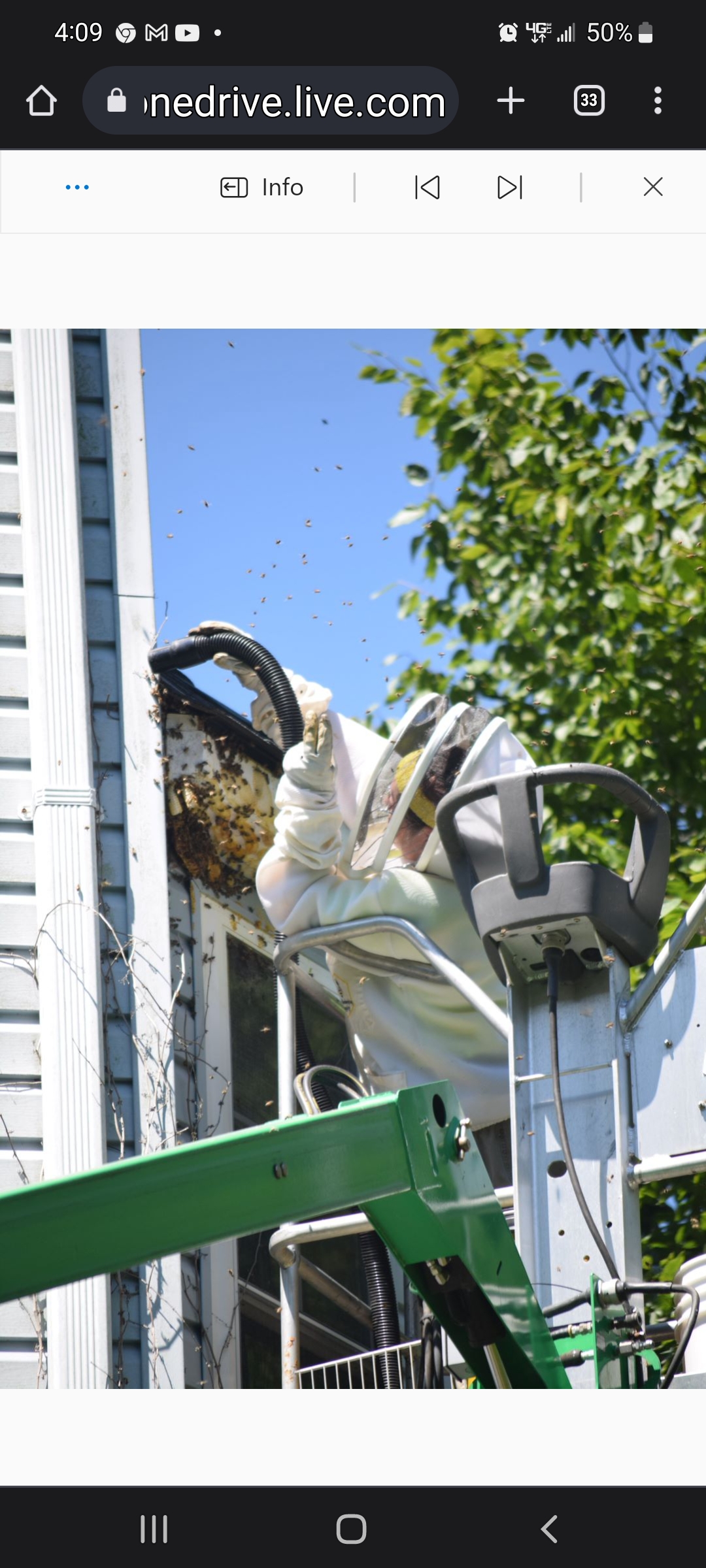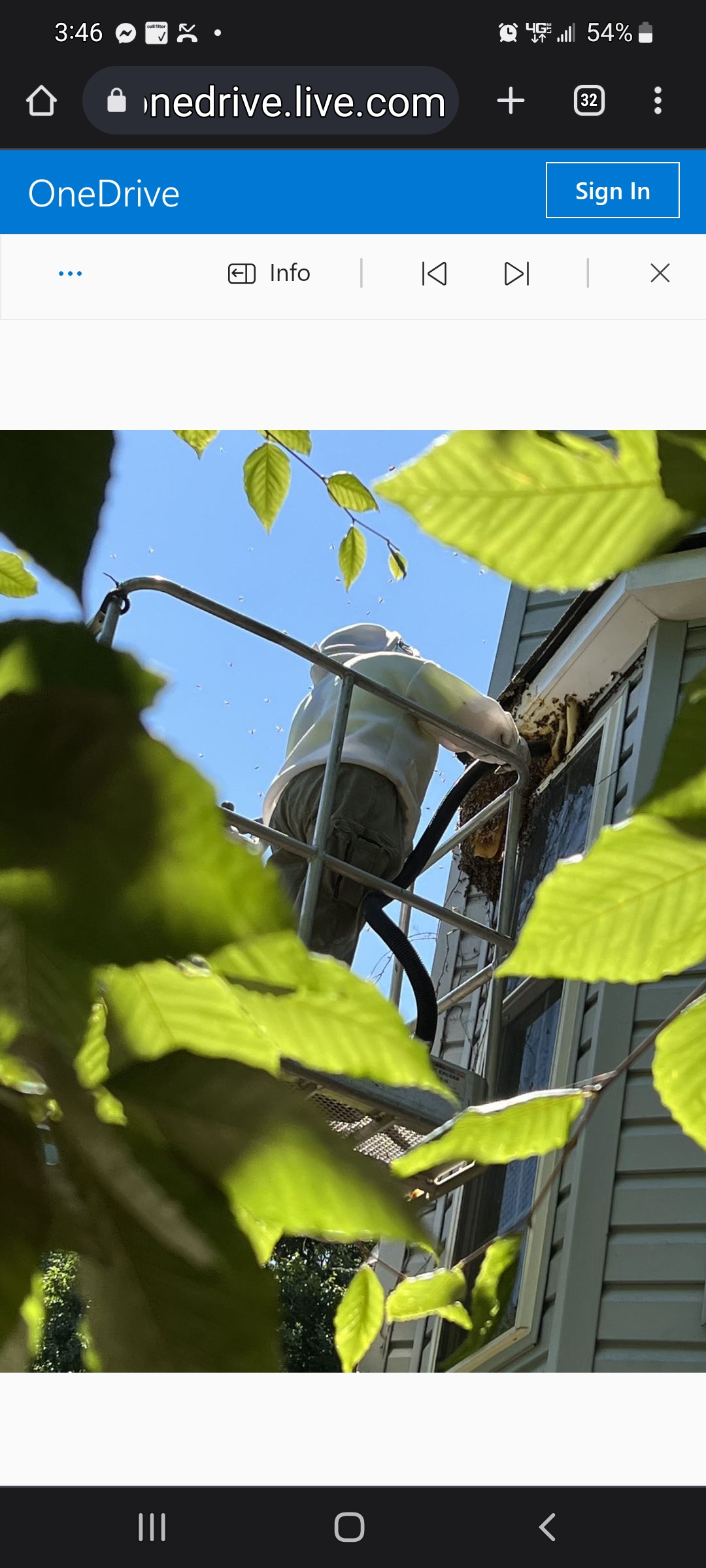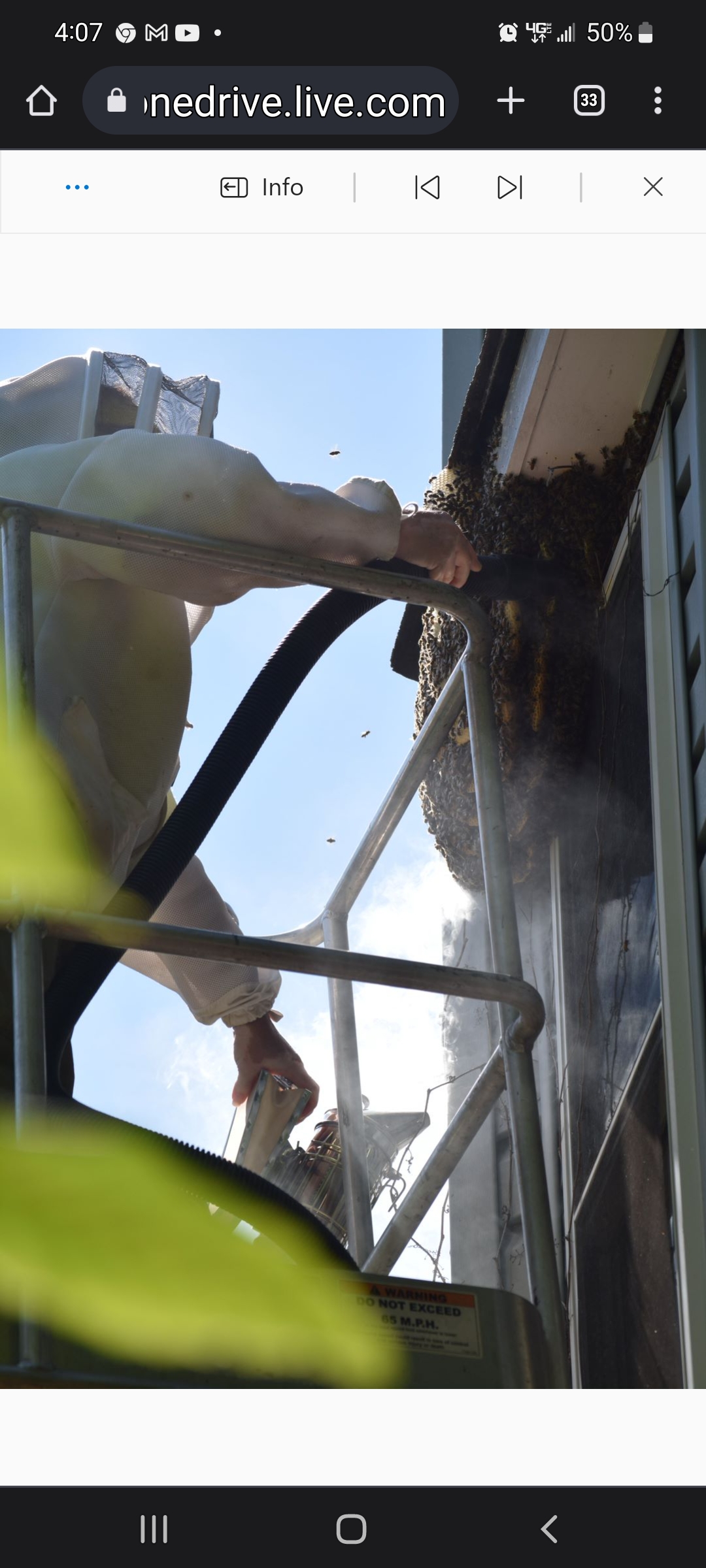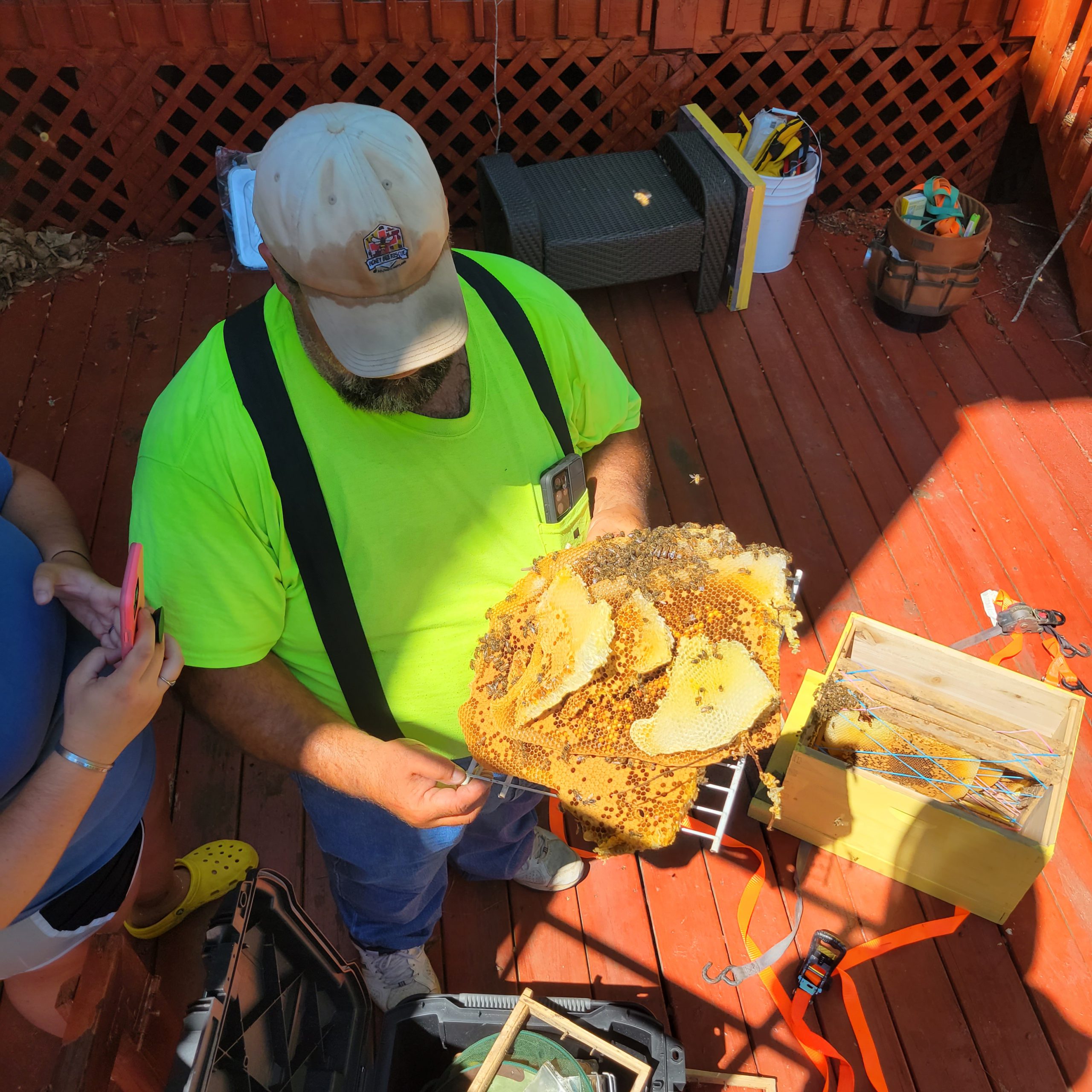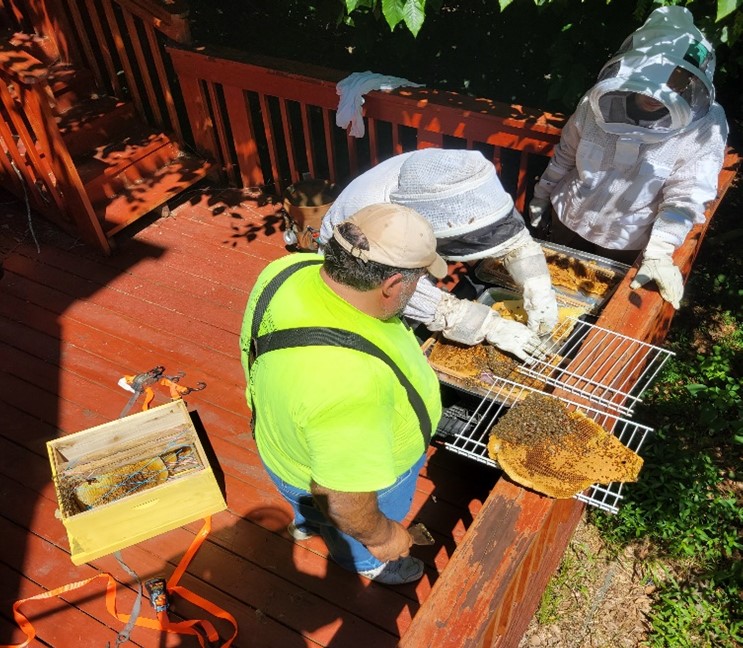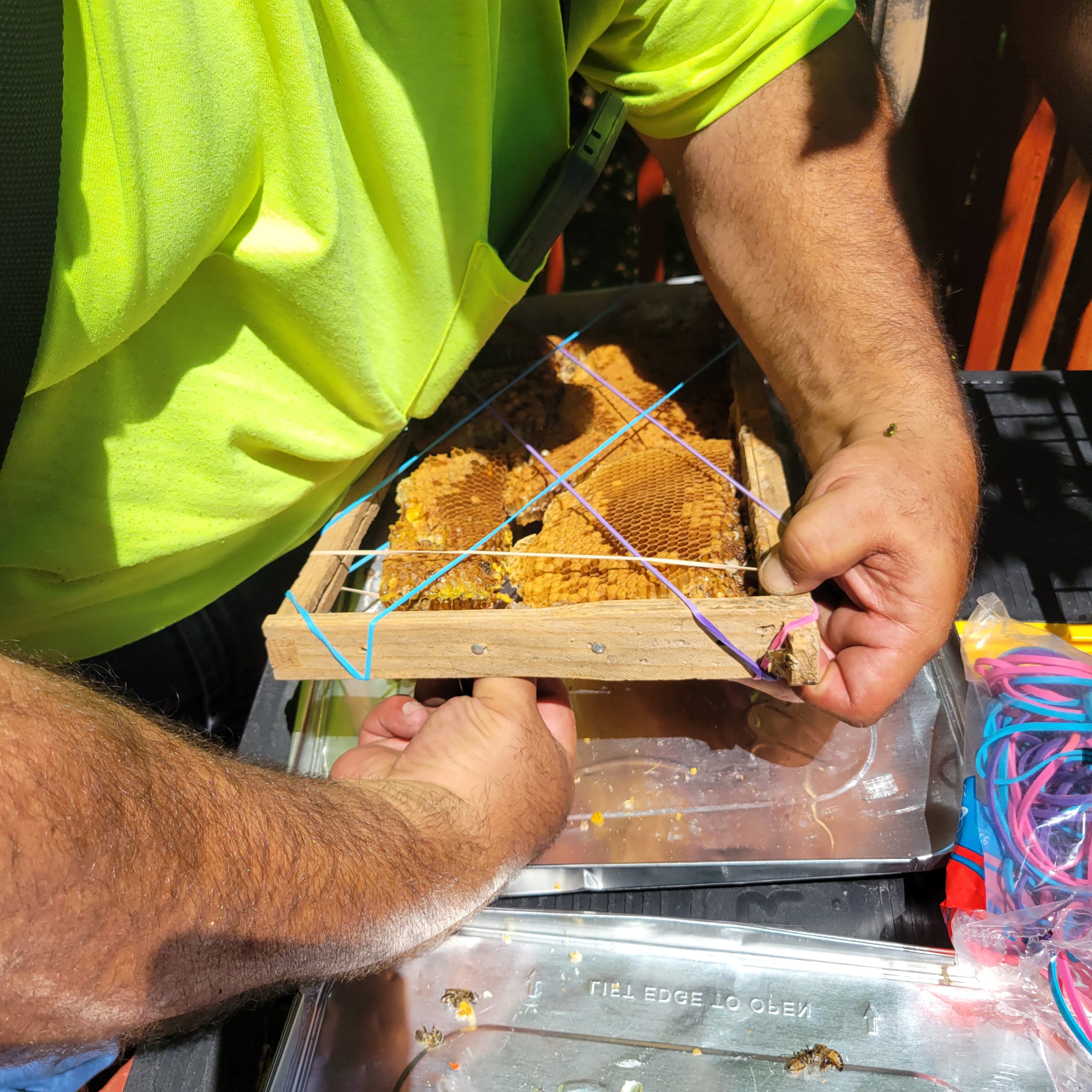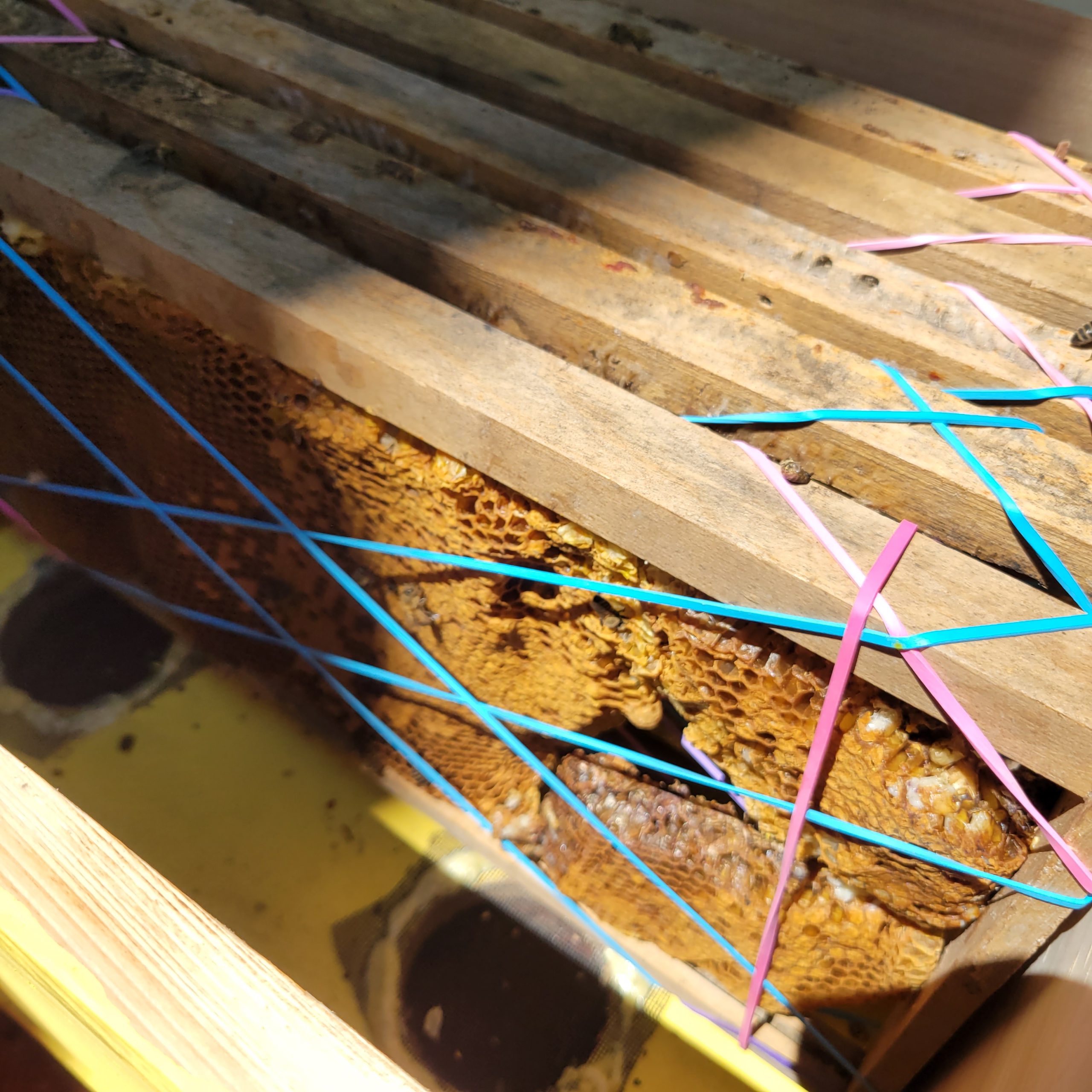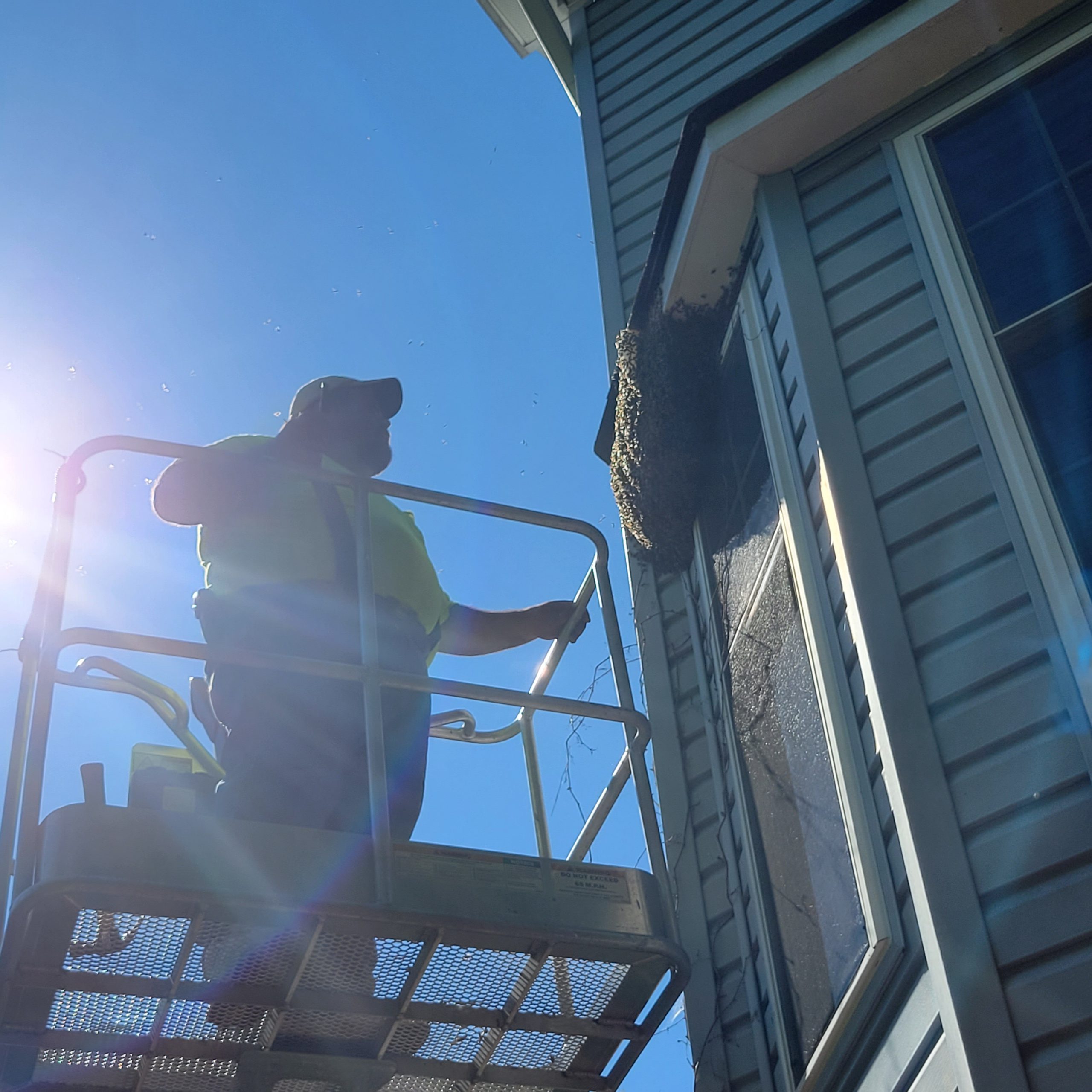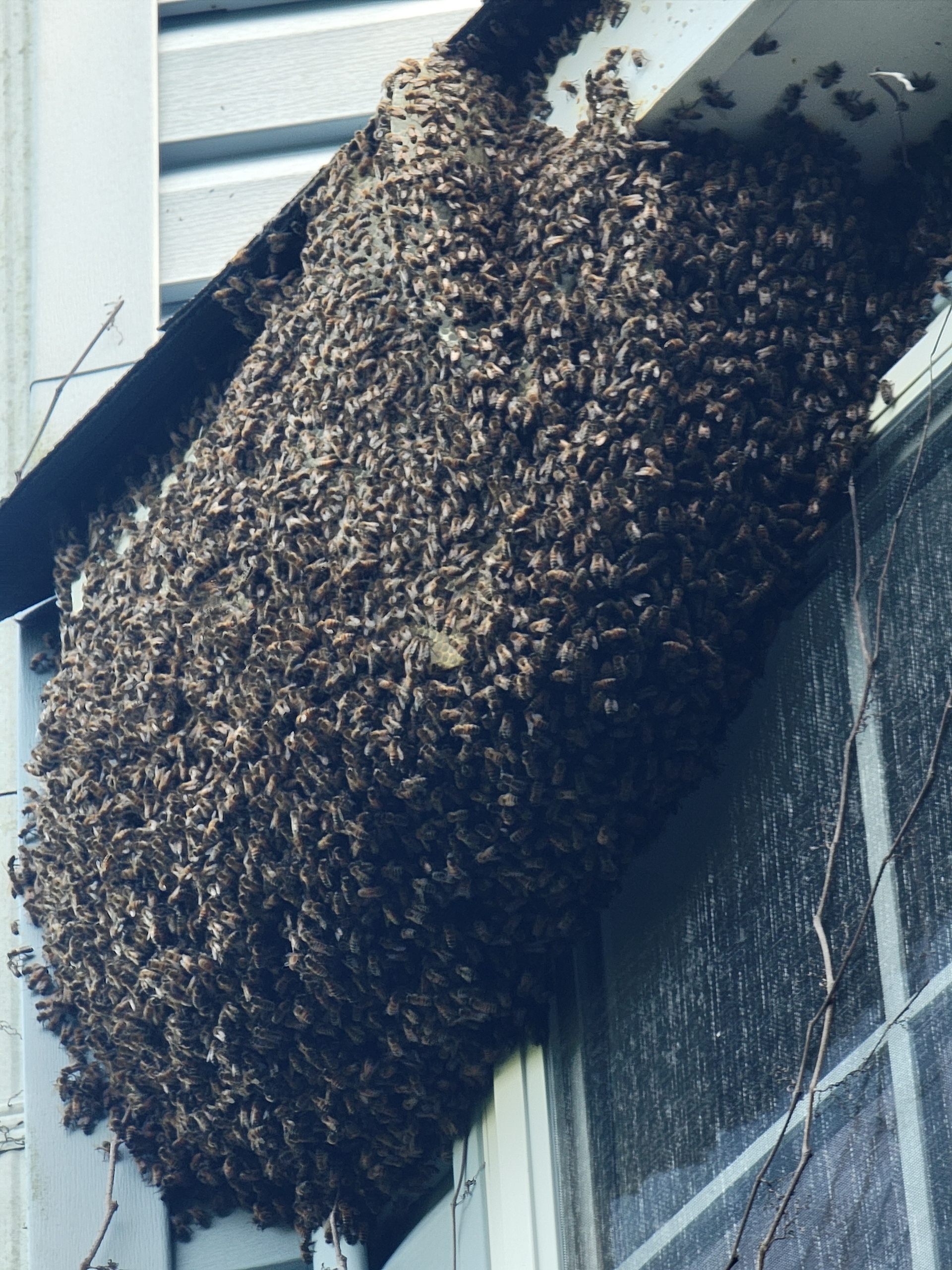Diane Wellons
Often as a beekeeper I am struck by the remarkable beauty of the natural world around me. I might find myself standing in a field of wildflowers with the bees buzzing around me or next to a barn with a living, working farm raising crops of beautiful food for the community. I am a part of those natural living spaces that surround me, connected to the earth and my food. It is one of the reasons I love beekeeping and the journey this hobby has taken me on. That connection brings peace, tranquility and a grounded balance to my life and I appreciate it more every day. The people I meet and the care and concern they all have for the mighty honey bee impresses me routinely.
Every now and again I will have one of those moments that I know, without a doubt, is such a rarity it will be a once in a lifetime event. I had one of those happenings recently and I want to share that experience with you, dear beekeeper readers, who I know can appreciate the significant beauty of such an occurrence.
It’s hot in Southern Maryland in the Summer, really hot, like Africa hot. High temperatures and high humidity can make beekeeping a bit treacherous. Dressing up in helmet, veil, long pants etc. and making sure to get plenty of hydration is hard when the bees are cranky and feeling the heat as much as we are. Plus, the slowing of nectar flow compounds is a stress for us all. I recently had surgery and have been fighting off a Lyme infection and just not quite feeling myself. To say I was run down and depleted is a bit of an understatement. Knowing all of this, I still said yes when a beekeeper friend sent me a photograph by text with a note that read “Want to see something special?” The photo he attached was so remarkable. I knew right then, I had to see it for myself.
This is an open-air colony. Created by the bees where they landed for bivouac. No hive required. This colony had built themselves a right beauty of a home on the side of a house. In this Summer heat, they were obviously doing just fine, but once Winter hits and temperatures drop, they will certainly perish (We live in growing zone 7b on the mid-Atlantic coast where it does get below freezing in the Winter). Lucky for these bees, the homeowners (Joe and Jane) have a first-year beekeeper daughter-in-law, Chrissy, who discovered the hive and decided to call for rescue.
I asked Jack if he was removing it directly and tried my best not to seem too desperate to go see it first-hand. The removal was taking place a week later and I managed to secure myself a ringside seat to watch or help. Never in my wildest imaginations did I expect what happened that day.
We arrived at the location of the hive. (We, a beekeeper friend Gina and myself.)
Jack is a dedicated friend and rescuer of the bees. His company Honey Bee Rescue of Southern Maryland does exactly that. In his free time, he manages to rescue and re-home these amazing little creatures and gives them a fighting chance to survive. He’s a professional and it was a real treat and privilege to watch and learn from him.
Because the colony was on a second story window, Jack brought in a bucket lift on a trailer and used it to get up close and personal with the bees.
Now, when I say I’m afraid of heights, I mean I’m terrified/petrified and am usually the very last one to ever volunteer for anything that requires being up off the ground. Besides the height, humiliation is not my bag and I refuse to vomit or wet myself in public as a matter of personal policy. I don’t even like the step stool in the house and I’m only five foot two inches and need it all the time. Somehow, I managed to be the first one begging to go up and meet this colony face to face in the bucket lift. Call it a moment of sheer curiosity (I did manage to preface my ride up with a comment to the peanut gallery that I might actually need some clean pants at the end of this adventure.) Somehow, I braved the ride up and managed to stay focused on the task at hand. I was so enthralled; I saw nothing but the bees. They were really calm on this very sunny morning. They were busy doing their work and not paying any attention to us at all.
Immediately, I was amazed. Seeing something like this up close really took my breath away.
I was struck first by the sheer size and rigidity of the structure they had built. The comb was still bright white on the outer edges and quite solidly constructed. The rows of wax were packed very close together with the central core of the brood was well nestled inside. They had given the structure extra support and brace comb throughout. We had come into our dearth and thus found little to no wet nectar in the hive and no stored honey at all. But wow was this Queen crushing it with the brood. So it began, gently vacuuming and removing the bees and comb with as delicate a hand as possible.
They were relatively calm while suffering the everything bee vac and even managed to stay fairly sedate while I began cutting the comb from the roof edge. We hauled the comb down on racks and Jack and the team made short work of fixing them to frames. Ben, Gina and Jack did an amazing job getting things put together and hive ready. Then Ben went up and cleaned up the remaining wax and bees.
Overall, a remarkable experience. I’m so grateful to Jack for reaching out to me with this and to the homeowners who called for removal versus extermination. To all of the helpers and attendants onsite that day: Ben (who took home this beautiful colony) and his wife Abby (who brought in additional equipment and moral support), Dale who took amazing photos of the day, Maggie (Jacks’ sister who brought in the man lift), Gina (first year keeper/apprentice), Todd and Debbie for more moral support and Joe, Jane and Chrissy and family who called for help in the first place. (I even managed to keep my bladder in check.)
I’m certain there will be many more bee adventures to come. To all the rescuers out there – blessings to you for all you do to help the bees and the beekeeping community at large. Removals like this are no easy task. It requires coordination of money and time and the help of friends and the community to make a rescue like this successful. Sincerely grateful to Jack and Honey Bee Rescue of Southern Maryland for all he does to support the beekeeping community and give keepers like myself such an incredible opportunity. You can visit Jack’s website at https://www.somdbeerescue.org
The story is really seen best in photos, if you would like to see more, I made a reel of the images which can be viewed on YouTube, search for Deez L’town Beez. Happy Keeping Friends.







